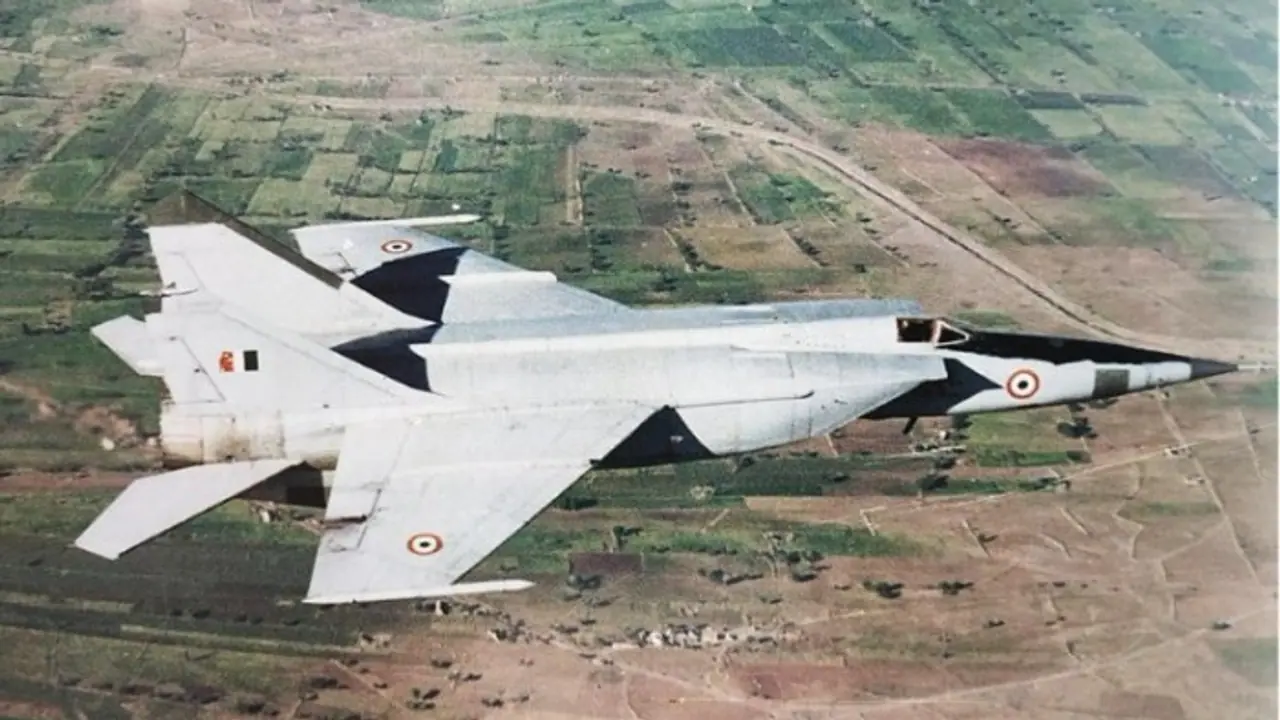For over 25 years, India’s secret MiG-25 Foxbat aircraft flew high above enemy lines, capturing critical defence imagery from deep inside Pakistan and China. This is the hidden story of IAF’s fastest and highest-flying warplane.
On a quiet morning in May 1997, panic gripped Pakistan’s capital, Islamabad. A thunderous boom cracked across the sky. Citizens believed it was a bomb blast. But it wasn’t a bomb—it was a sonic boom, caused by an Indian MiG-25 Foxbat aircraft flying faster than the speed of sound.

Before Pakistan’s F-16 fighter jets could even scramble to respond, the Foxbat had already turned back. It crossed the border and vanished into Indian airspace. What made this possible? The MiG-25, also called ‘Garuda’, wasn’t just fast—it was almost untouchable.
For 25 years, this aircraft remained India’s deepest secret in the skies, operated by a small group of elite Indian Air Force (IAF) pilots from the No. 102 Trisonics Squadron in Bareilly.
Nicknamed the ‘superspy in the sky’, this plane mapped enemy territory, tracked missile silos, and captured razor-sharp photographs of defence sites inside Pakistan and along the China border—without ever being seen.
From Soviet secret to Indian asset
The MiG-25 Foxbat was originally built by the Soviet Union in the 1960s to outrun and outclimb American bombers. It could fly over three times the speed of sound (Mach 3.2) and cruise at altitudes above 90,000 feet—three times the height of Mount Everest.
Even Soviet allies were denied access to this jet. But in a surprise turn in 1980, the USSR offered it to India. Former IAF chief Idris Latif recalled being “shocked and delighted” to get access to what was considered the best reconnaissance jet in the world at the time.
India quietly acquired eight single-seat MiG-25Rs for high-speed surveillance and two two-seat MiG-25Us for pilot training.
The eyes that saw too much
The MiG-25 carried massive 1,200 mm cameras—so powerful they could photograph New Delhi while sitting in Bareilly. These high-resolution images captured vital intelligence about Pakistani and Chinese military sites.
According to Wing Commander Alok Chauhan, who flew the Foxbat, the aircraft could map an area the size of Pakistan in just four or five sorties—a feat no other Indian aircraft has ever achieved. Its speed was so blistering, it was said to fly faster than bullets and even outrun missiles.
It was a gas guzzler, burning 23,000 litres of fuel in a single mission, and required pilots to wear pressure suits like Russian cosmonauts due to the extreme altitude.
Secret missions, unsung heroes
The Foxbat flew 20 to 25 missions every month, often across the Line of Control with Pakistan or the Line of Actual Control with China. Yet, most in the IAF never even saw the aircraft. The Bareilly airbase was heavily restricted.
Only 42 Indian pilots ever flew the MiG-25. To qualify, a pilot needed to be a Wing Commander with the most experience and top flight records. One of them, Wing Commander Sanjeev Taliyan, said flying the Foxbat gave pilots a bird’s eye view of the entire Himalayan range in one glance.
The mission over Islamabad: A statement in the sky
The 1997 sonic boom mission wasn’t just a surveillance flight—it was also a psychological operation. According to Pakistani sources, the Foxbat flew deliberately low over Islamabad at supersonic speed to remind the Pakistan Air Force (PAF) that it had nothing that could match India’s spy plane.
India never officially confirmed the mission, but Pakistan’s own public statements admitted the shock of the flyover. The incident revealed just how vulnerable Pakistani air defences were, and how deep India’s aerial surveillance capabilities had reached.
Outliving America’s Blackbird
While the Foxbat was often compared to the American SR-71 Blackbird, it quietly outlived its more famous rival. The US retired its Blackbird in 1998, but India kept flying the MiG-25 until 2006.
When the time came to retire it, Air Commodore Shankar Mani, then Bareilly base commander, said, “These aircraft were the envy of the world. After 25 years of yeoman service, it’s now time to let them go.”
Legacy of a legend
Today, one of the decommissioned MiG-25s is displayed at the Indian Air Force Museum in Palam, Delhi. But its stories remain classified. The missions, the photographs, the intelligence it gathered—all still under wraps.
The legacy of the Foxbat and its elite pilots lives on in whispers and faded cockpit logs. It remains one of the most powerful tools of India’s Cold War-era defence strategy, and an icon of technological courage and aviation excellence.
Perhaps one day, India will honour the unsung heroes who flew these metallic beasts at the edge of space, looking down at enemy territory through a lens more powerful than any satellite.


